-
Is Your Car Ready for Abu Dhabi's Heat? Detailing Tricks You Need Now

Abu Dhabi’s scorching summer heat can take a toll on your car, both inside and out. From faded paint and cracked leather to engine overheating, the extreme temperatures demand extra care to keep your vehicle in top shape. To ensure your car remains pristine and performs optimally during the hot season, proper detailing is essential. In this guide, we’ll walk you through expert detailing tips and tricks that will help protect your car from the harsh UAE sun. And for the best results, trust Service My Car to keep your vehicle looking and performing at its best.
Why Car Detailing is Essential in Abu Dhabi’s Heat

Car detailing isn’t just about keeping your vehicle looking clean; it’s about preserving its longevity and ensuring it remains comfortable and functional despite the extreme climate. The sun’s intense UV rays can cause paint fading, while dust and sand can scratch the surface and damage interiors. High temperatures can also deteriorate rubber seals, dashboards, and upholstery. Regular car detailing helps mitigate these risks, making it an essential part of car maintenance in Abu Dhabi.
Essential Car Detailing Tricks for Abu Dhabi’s Heat

1. Protect Your Car’s Exterior with Ceramic Coating
One of the most effective ways to protect your car’s paintwork is by applying a ceramic coating. This advanced protective layer acts as a shield against UV rays, dirt, and sand while giving your car a glossy finish. Unlike traditional waxing, ceramic coatings provide long-lasting protection and make cleaning much easier. Service My Car offers professional ceramic coating services that will ensure your car remains spotless and well-protected.
2. Opt for High-Quality Car Waxing
If you’re not ready for ceramic coating, waxing your car regularly is another excellent way to protect the paint. A high-quality wax creates a barrier that reflects harmful UV rays and repels dust, preventing paint oxidation and fading. To maximize protection, wax your car every three months, especially before the peak summer season in Abu Dhabi.
3. Keep Your Car Cool with Tinted Windows

Window tinting is not just a style statement; it’s a necessity in the UAE. High-quality tint films can block up to 99% of harmful UV rays and significantly reduce the interior temperature of your car. This protects your dashboard, seats, and electronic components from sun damage. Service My Car provides expert window tinting services, ensuring you get the best protection without compromising visibility.
4. Clean and Condition Leather Interiors
Leather interiors can easily crack and fade due to excessive heat exposure. Regular cleaning with a pH-balanced leather cleaner helps remove dirt and grime, while applying a quality leather conditioner keeps the material soft and hydrated. If your car has fabric seats, consider using seat covers to prevent fading and wear.
5. Protect Your Dashboard and Trim
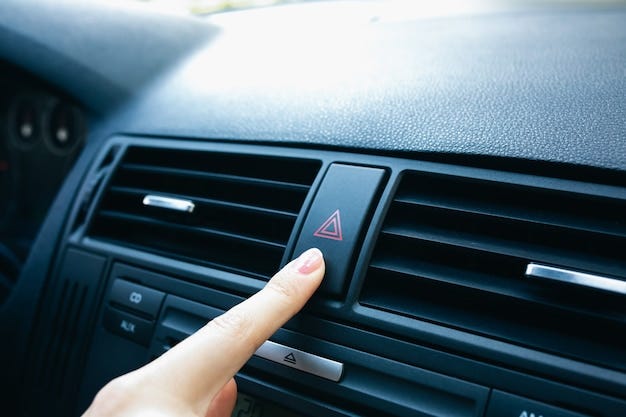
Your dashboard and trim are among the most vulnerable areas in extreme heat. To prevent cracking and discoloration, use a UV protectant spray or dashboard conditioner. You can also use a sunshade when parking to minimize direct exposure to sunlight.
6. Regularly Wash and Detail Your Car
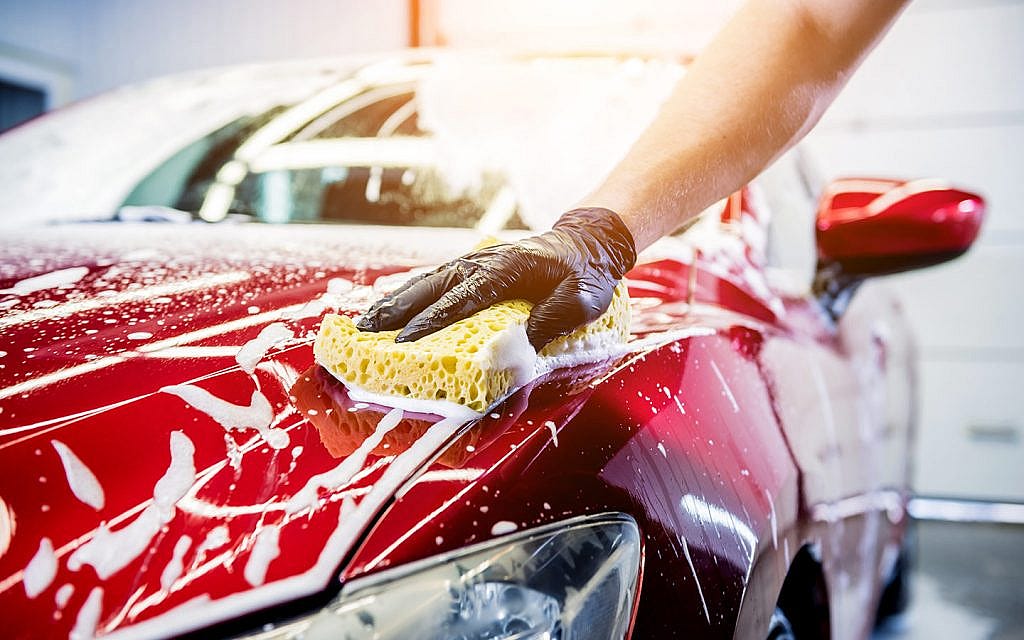
Washing your car frequently prevents dust, sand, and pollutants from accumulating and causing damage. However, avoid washing your car under direct sunlight, as it can leave water spots and streaks. Use a microfiber cloth to dry the car and apply a quick detailer spray for added shine.
7. Maintain Your Car’s Air Conditioning System

A well-functioning AC system is crucial in Abu Dhabi’s climate. Regularly check and clean the AC vents, replace the cabin air filter, and ensure your refrigerant levels are adequate. A professional AC servicing from Service My Car can help you stay cool and comfortable during the summer.
8. Use a Car Cover When Parking Outdoors
If you don’t have access to covered parking, using a high-quality car cover can help protect your vehicle from the sun’s damaging effects. Choose a breathable, UV-resistant cover to prevent heat buildup and paint damage.
9. Pay Attention to the Tires
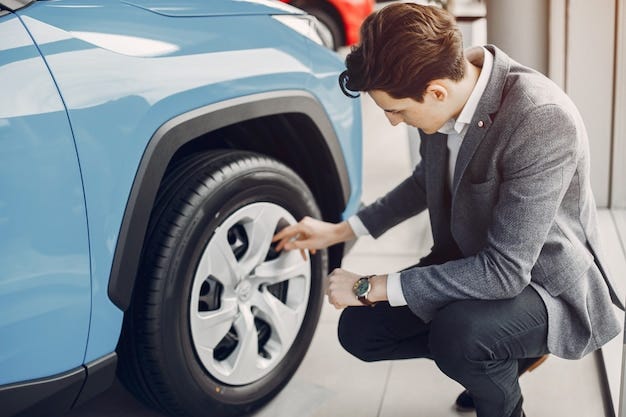
Hot weather can increase tire pressure, raising the risk of blowouts. Regularly monitor your tire pressure and keep it at the recommended level to ensure safety.
10. Keep Your Car’s Engine in Check
Heat can affect your engine’s performance, leading to overheating and potential breakdowns. Regularly check coolant levels, inspect the radiator, and ensure your battery is in good condition. Service My Car offers comprehensive engine diagnostics and maintenance to keep your vehicle running smoothly.
Why Choose Service My Car for Professional Car Detailing?

When it comes to protecting your car from the harsh Abu Dhabi heat, professional detailing services make a world of difference. Service My Car offers premium auto detailing solutions, including:
- Ceramic Coating for long-lasting paint protection
- Professional Car Waxing for enhanced shine and UV defense
- Interior Deep Cleaning to maintain a fresh and comfortable cabin
- Window Tinting to reduce heat and sun damage
- Engine and AC Maintenance to ensure optimal performance
With skilled professionals and high-quality products, Service My Car guarantees top-notch results that keep your car looking and performing at its best.
Frequently Asked Questions (FAQ)

1. How often should I detail my car in Abu Dhabi?
It is recommended to detail your car every 3-4 months to protect it from extreme heat and dust accumulation.
2. Is ceramic coating worth it in hot climates?
Yes, ceramic coating provides superior protection against UV rays, heat, and dust, making it a great investment for Abu Dhabi’s climate.
3. Can window tinting help keep my car cooler?
Absolutely! High-quality tint films can reduce interior temperatures significantly and block harmful UV rays, preserving your car’s interior.
4. How can I protect my car’s leather seats from cracking?
Regular cleaning and conditioning with a leather protectant can help prevent drying and cracking caused by extreme heat.
5. Why is engine maintenance important during summer?
High temperatures can cause engines to overheat. Regular coolant checks, radiator inspections, and AC servicing are crucial for smooth performance.
Final Thoughts
Abu Dhabi’s extreme heat requires car owners to take extra precautions to protect their vehicles. By following these detailing tricks, such as applying ceramic coating, using high-quality wax, tinting windows, and maintaining interiors—you can keep your car in excellent condition throughout the summer. For the best auto detailing services, trust Service My Car to provide expert care and protection. Book your car detailing appointment today and ensure your car stays cool, clean, and protected in the UAE heat!
Thank you for reading our blog! If you own a Jeep and need a trusted service provider for Jeep repair Abu Dhabi, look no further than Service My Car. Their expert team, equipped with cutting-edge diagnostic tools, ensures your Jeep gets the highest quality care and attention. From routine maintenance to major repairs, Service My Car offers reliable, efficient, and cost-effective solutions for all your Jeep needs. Trust them to keep your jeep performing at its best.
-
Comprehensive Guide to Hyundai Service in Abu Dhabi
When it comes to maintaining the performance and longevity of your Hyundai, choosing the right service center is crucial. For Hyundai owners in Abu Dhabi, it’s essential to find a reliable service provider that understands the unique needs of your vehicle. In this guide, we’ll explore the importance of regular servicing, the benefits of professional Hyundai service, and how to choose the best service center for your needs in Abu Dhabi.
Why Regular Hyundai Service is Important
-
Optimized Performance Regular servicing ensures that your Hyundai performs at its best. Routine checks help identify and fix minor issues before they escalate into more serious problems. This not only enhances your car’s performance but also provides a smooth and enjoyable driving experience.
-
Safety and Reliability A well-maintained vehicle is a safe vehicle. Routine maintenance checks, including brake system inspections, tire checks, and engine diagnostics, ensure that your Hyundai is always ready to handle the demands of the road. Regular service is essential for safety, especially in harsh weather conditions and city traffic in Abu Dhabi.
-
Extended Vehicle Life Servicing your Hyundai regularly contributes to the longevity of your car. By keeping up with oil changes, air filter replacements, and fluid checks, you can help your vehicle last longer and avoid costly repairs in the future. This also maintains its resale value.
-
Better Fuel Efficiency Over time, parts such as air filters, fuel injectors, and spark plugs may degrade, reducing your car’s fuel efficiency. Regular servicing ensures that all components are in top condition, which can lead to better mileage and lower fuel consumption.
Key Hyundai Services in Abu Dhabi
-
Engine Maintenance The engine is the heart of your Hyundai, and it requires regular maintenance to keep it running smoothly. Services such as oil changes, filter replacements, and coolant checks are essential to maintain optimal engine performance.
-
Brake System Inspection The brake system is one of the most critical components of your vehicle’s safety. Regular brake inspections help ensure that your Hyundai’s brakes are functioning properly, minimizing the risk of accidents caused by brake failure.
-
Air Conditioning Servicing In Abu Dhabi’s hot climate, a fully functional air conditioning system is crucial for comfort. Hyundai service centers offer AC checks and maintenance to ensure that your cooling system is working efficiently, keeping you comfortable even in the hottest months.
-
Battery and Electrical System Check Your Hyundai’s electrical system powers many components, from lights to infotainment systems. Regular checks of the battery and electrical system ensure that all electronic components are functioning as they should.
-
Tire Inspection and Rotation Tires are one of the most critical safety features of your vehicle. Regular tire inspections, rotations, and alignments ensure that your Hyundai handles well and provides a smooth ride.
Choosing the Right Hyundai Service Center in Abu Dhabi
-
Experience and Expertise Choosing a service provider with extensive experience and specialized knowledge in Hyundai vehicles is essential. A well-trained team will provide high-quality service tailored to your car's specific requirements.
-
Certified Technicians It’s crucial that your Hyundai be serviced by certified technicians who are trained to handle the latest Hyundai models. Look for service centers that employ certified professionals to ensure your car receives the best care.
-
Genuine Parts and Accessories For optimal performance and safety, always choose a service center that uses genuine Hyundai parts. Using high-quality parts ensures that your vehicle continues to perform as expected and maintains its original specifications.
-
Customer Reviews and Reputation Before committing to a service provider, check customer reviews and testimonials. A reputable service center will have positive feedback and a solid track record of customer satisfaction.
-
Convenience and Location Choose a service center that is easily accessible in Abu Dhabi, with flexible hours to accommodate your schedule. Some centers even offer mobile services for added convenience, allowing you to get your car serviced at your location.
How Service My Car Can Help
For Hyundai owners in Abu Dhabi, Service My Car offers comprehensive maintenance and repair services, ensuring that your vehicle remains in excellent condition. With a team of experienced technicians and a commitment to using only high-quality parts, Service My Car delivers reliable and convenient services that keep your Hyundai running smoothly.
Conclusion
Regular maintenance is essential for the performance, safety, and longevity of your Hyundai. In Abu Dhabi, finding a reliable and experienced service center is key to ensuring that your vehicle continues to operate at its best. By choosing the right service provider and staying on top of routine maintenance, you can enjoy a smooth and hassle-free driving experience for years to come.
If you're looking for a trusted Hyundai Service Abu Dhabi, Service My Car offers expert care and attention to every detail, ensuring your vehicle is always in top condition. Whether it's a routine check-up or a more extensive repair, a professional service center can keep your Hyundai performing at its peak.
-
-
Reliable Car Repair Services in Abu Dhabi: Ensuring Quality and Convenience
When it comes to maintaining a car, timely repairs and servicing are essential for ensuring its longevity, safety, and optimal performance. In Abu Dhabi, where the scorching desert heat and busy lifestyle put extra pressure on your vehicle, finding a trustworthy car repair service provider is crucial. Whether it’s a simple oil change, tire repair, or major engine issues, having access to reliable and efficient car repair services can save you time, money, and stress.
Why Regular Car Repairs Are Important in Abu Dhabi
The climate in Abu Dhabi is known for its high temperatures, especially during summer months, which can affect a car's performance. Heat can cause your car’s engine to overheat, the tires to wear out quickly, and components to degrade faster. Regular car maintenance and repairs ensure that your vehicle can withstand these conditions, offering you a safer and smoother ride.
Common Car Issues in Abu Dhabi and Their Solutions
-
Air Conditioning Problems: The extreme heat in Abu Dhabi can lead to air conditioning issues. If your car’s AC is not cooling as effectively as it should, it may be a sign that the system needs servicing. A professional repair service will check refrigerant levels, filters, and other components to restore your comfort.
-
Engine Overheating: The high temperature in Abu Dhabi can strain a car's engine, especially if the cooling system is not functioning correctly. Overheating engines can cause long-term damage if not addressed. Routine checks and cooling system maintenance can help prevent this issue.
-
Tire Wear and Tear: The hot roads in Abu Dhabi can cause your tires to wear out faster than usual. Monitoring tire pressure and tread depth is essential to avoid flat tires or blowouts, which can lead to accidents. Regular tire checks and replacements ensure a safe and smooth driving experience.
-
Brake System Problems: The hot temperatures and busy traffic in Abu Dhabi can put extra stress on your car’s braking system. Worn-out brake pads or brake fluid issues should be addressed immediately to maintain vehicle safety.
-
Battery Life: Extreme heat can drain your car’s battery life, reducing its overall performance. Regular inspection of your car’s battery and alternator can prevent unexpected breakdowns and costly repairs.
Benefits of Professional Car Repair Services in Abu Dhabi
-
Convenience and Time-Saving: In a busy city like Abu Dhabi, time is valuable. Opting for a professional car repair service that offers doorstep services can save you hours. With experts coming to your location, there’s no need to travel to a repair shop, allowing you to focus on your other responsibilities.
-
Expert Technicians: Professional repair services employ certified and skilled technicians who are experienced in diagnosing and fixing a wide range of car issues. Their knowledge ensures that the job is done correctly, avoiding future problems that could arise from improper repairs.
-
High-Quality Parts and Tools: Reputable repair services use genuine parts and advanced tools to ensure the repairs last longer. By using quality materials, they help maintain the overall health of your car.
-
Cost-Effective: While opting for professional services may seem like an added expense, in the long run, it can save you money by preventing small issues from becoming major problems. Moreover, transparent pricing and a well-defined service agreement ensure that there are no hidden costs.
How to Choose the Right Car Repair Service in Abu Dhabi
Choosing the right repair service provider can be daunting. Here are some factors to consider before making a decision:
-
Reputation: Look for companies with a strong reputation in the market. Customer reviews and feedback can give you an idea of their reliability and quality of service.
-
Service Range: Opt for a repair service that offers a wide range of services, from routine maintenance to emergency repairs. This ensures you can rely on them for any car-related issues.
-
Experience: A company with years of experience in the industry is more likely to deliver high-quality repairs. Check how long the service provider has been operating in Abu Dhabi.
-
Certifications: Ensure that the technicians are certified and trained to handle your specific car make and model. Certified professionals have the necessary skills to provide optimal service.
-
Warranty and Guarantees: A reputable car repair service will offer warranties or guarantees on their repairs. This gives you peace of mind that the job will be done correctly, or they will fix any issues that arise afterward.
Conclusion
When it comes to Car Repair Abu Dhabi, timely maintenance and reliable service providers are key to keeping your vehicle running smoothly. From engine cooling to tire maintenance, regular servicing ensures that your car remains safe, efficient, and capable of handling the challenging desert conditions. Choosing a service that offers expertise, convenience, and quality will save you time, money, and stress in the long run. For those in Abu Dhabi seeking reliable car repair solutions, reaching out to Service My Car provides the peace of mind and professional care your car deserves.
-
-
Why Regular Car Service is Essential for Your Vehicle’s Longevity
Owning a car is a major investment, and ensuring that it runs smoothly for years requires regular maintenance. Whether it's keeping the engine in top condition or preventing minor issues from turning into costly repairs, car servicing plays a crucial role. Here’s why regular car service is essential for your vehicle's longevity and performance.
1. Maintains Optimal Engine Performance
A well-maintained engine ensures smooth driving. Regular car servicing includes checking the engine's health, oil levels, and replacing worn-out parts like air filters and spark plugs. These small steps go a long way in ensuring the engine performs at its best, improving fuel efficiency and overall driving experience.
2. Prevents Expensive Repairs
Minor issues, if not addressed on time, can turn into major problems. A small leak in the coolant system or a worn-out brake pad can escalate into an engine breakdown or brake failure. Regular check-ups allow professionals to identify potential issues early on, preventing expensive repairs in the future.
3. Ensures Safety on the Road
Car servicing doesn’t just improve performance; it also ensures your safety. A serviced car is less likely to break down unexpectedly or suffer from mechanical failures while you’re on the road. Regular servicing includes checking the brakes, tires, suspension, and lights, all of which are crucial to keeping you and your passengers safe.
4. Enhances Fuel Efficiency
One of the most significant advantages of regular car servicing is improved fuel efficiency. Over time, the engine and other parts of the vehicle can become less efficient, leading to higher fuel consumption. By getting your car serviced on schedule, you ensure that all parts, from the engine to the exhaust system, are running optimally, saving you money on gas.
5. Improves Resale Value
A well-maintained car is more likely to retain its value. Potential buyers are more inclined to purchase a vehicle that has been regularly serviced, knowing that they won’t face unexpected repair costs soon after purchase. Keeping a log of your car’s service history also makes the car more appealing when it’s time to sell.
6. Ensures Compliance with Warranty Terms
Many car manufacturers require that regular servicing be carried out to maintain the validity of the warranty. Failing to meet these servicing requirements could void your warranty, leaving you with unexpected repair bills. Regular servicing ensures you’re compliant with the terms of your vehicle’s warranty.
7. Boosts Driving Comfort
A well-serviced car contributes to a more comfortable driving experience. From a smooth ride with properly aligned wheels to an efficient air conditioning system, regular servicing helps maintain the comfort features of your vehicle. Additionally, it reduces the likelihood of sudden breakdowns that can disrupt your travel plans.
8. Prevents Breakdown at Inconvenient Times
Car breakdowns can happen at the most inconvenient times, especially if your car hasn’t been maintained properly. Imagine being stuck on the highway in the middle of nowhere due to a car issue. Regular servicing minimizes the chances of such breakdowns, keeping you on the move without worrying about unexpected stops.
Conclusion
In conclusion, regular car service is a key aspect of vehicle ownership. It not only ensures that your car remains in peak condition, but it also prevents breakdowns, enhances fuel efficiency, and improves safety. A serviced car is more reliable, more fuel-efficient, and holds its value longer. For these reasons, scheduling regular services with a trusted provider, like Service My Car, can help you get the most out of your car, extending its lifespan and protecting your investment.
Taking the time for routine maintenance may seem like a small effort compared to the long-term benefits it provides, making it an essential part of car ownership.
-
Expert Chevrolet Camaro Convertible Service in Abu Dhabi: Keeping Your Ride in Top Shape
When it comes to luxury sports cars like the Chevrolet Camaro Convertible, regular maintenance and timely servicing are essential to keep it running smoothly and looking great. If you’re in Abu Dhabi and need reliable Chevrolet service, you're in the right place. Whether it’s a routine check-up or an urgent car repair, your Camaro deserves expert care to ensure it continues to offer the thrill of the open road.
Why Service Your Chevrolet Camaro Convertible Regularly?
A Chevrolet Camaro Convertible is a high-performance vehicle, designed for enthusiasts who enjoy a blend of power, style, and an unmatched driving experience. However, like all vehicles, it requires regular care to maintain its optimal performance. Regular servicing can help you avoid major repairs and extend the lifespan of your car.
Common Chevrolet Camaro Convertible Issues
1. Engine Troubles
The Camaro is known for its powerful engine, but it can experience issues over time. Common problems include engine misfires, overheating, or rough idling. Regular maintenance, such as oil changes and spark plug inspections, can prevent these issues from escalating.2. Transmission Problems
As with any performance vehicle, a malfunctioning transmission can be detrimental. If you notice shifting issues or strange noises, it may be time to get your Camaro’s transmission inspected by professionals.3. Brake Wear
High-performance cars often have specialized braking systems. Worn-out brakes not only compromise safety but can also affect your car’s handling. Regular brake inspections are essential, especially for a car like the Camaro.4. Battery and Electrical Issues
A weak battery or electrical malfunction can lead to problems starting your Camaro. It’s important to check your battery and electrical system to avoid being stranded.5. Suspension and Alignment Issues
The Camaro’s rigid suspension system provides excellent handling, but if misaligned or worn out, it can affect the car’s stability and comfort. Regular suspension inspections will ensure your Camaro remains stable on the road.Additional Chevrolet Services in Abu Dhabi
Apart from the Camaro Convertible, Service My Car offers expert services for other Chevrolet models, such as the Chevrolet Captiva and Chevrolet Colorado. These vehicles, known for their reliability and versatility, also benefit from regular servicing to ensure their engines, transmissions, and braking systems remain in top condition.
1. Chevrolet Captiva Service in Abu Dhabi
The Captiva is a compact SUV that requires regular attention to keep its engine, transmission, and electrical systems in optimal condition. Whether it’s an oil change or a complete engine diagnostic, keeping your Captiva well-maintained will ensure it runs smoothly.2. Chevrolet Colorado Service in Abu Dhabi
For owners of the Chevrolet Colorado, a versatile pickup truck, maintenance services like wheel alignment, suspension checks, and brake inspections are crucial. Regular service will enhance its off-road capability and ensure longevity.Why Choose Professional Car Repair in Abu Dhabi?
In Abu Dhabi, finding a trusted service center for Chevrolet Captiva Service Abu Dhabi is crucial. Whether it’s a minor issue or a major repair, it’s always best to rely on professionals who specialize in specific brands and models. Expert service ensures that only the right parts are used, and your vehicle is handled by technicians who understand the unique requirements of your Chevrolet.
Choose the Best: Service My Car
When looking for expert Chevrolet service in Abu Dhabi, Service My Car stands out for its top-quality service and customer satisfaction. Their team of certified technicians is experienced with a wide range of vehicles, including the Chevrolet Camaro Convertible Service Abu Dhabi, Chevrolet Captiva, and Chevrolet Colorado. Whether you're looking for a simple tune-up or a complex repair, Service My Car is your go-to destination.
Conclusion
Owning a Chevrolet Camaro Convertible in Abu Dhabi is a dream come true for many car enthusiasts. However, to keep your car in pristine condition and ensure that it continues to offer unparalleled driving experiences, regular servicing is essential. From engine maintenance to brake repairs, Service My Car is dedicated to providing the best Chevrolet service, including for models like the Camaro, Captiva, and Colorado. When it comes to Car Repair in Abu Dhabi, trust the experts to keep your vehicle running at its best.
-
10 Tips for Reducing Car Suspension Repair Cost
 Maintaining your car’s suspension system is crucial for both comfort and safety. However, suspension repairs can be costly if not handled properly. The good news is that you can significantly reduce these costs by adopting a proactive approach to car maintenance. Here are 10 tips to help you lower your suspension repair expenses while keeping your vehicle in top condition.
Maintaining your car’s suspension system is crucial for both comfort and safety. However, suspension repairs can be costly if not handled properly. The good news is that you can significantly reduce these costs by adopting a proactive approach to car maintenance. Here are 10 tips to help you lower your suspension repair expenses while keeping your vehicle in top condition.1. Regularly Inspect Your Suspension System

Prevention is always cheaper than repair. Perform routine checks on your suspension system to spot issues early. Look out for signs of wear such as uneven tire wear, excessive bouncing, or pulling to one side. Early detection of minor problems can prevent expensive repairs later.
2. Check and Rotate Tires Frequently

Worn-out or uneven tires can put added strain on your suspension. Regular tire rotation ensures even wear, helping to balance the vehicle’s load more efficiently. This reduces the stress on suspension components like shocks and struts, extending their lifespan and reducing the need for replacement.
3. Avoid Overloading Your Vehicle

Suspension systems are designed to handle a specific weight capacity. Constant overloading stresses the springs, shocks, and struts, causing them to wear out faster. By adhering to your vehicle’s load capacity, you prevent premature damage to the suspension and avoid hefty repair bills.
4. Drive Carefully Over Bumps and Potholes

Rough driving habits, like speeding over potholes or bumps, can accelerate suspension wear and tear. Potholes can damage suspension components such as control arms, springs, and shocks. Slow down when driving over uneven surfaces, and where possible, avoid potholes to minimize damage.
5. Replace Worn-Out Suspension Parts Promptly

If you notice worn suspension components, don’t delay their replacement. Worn parts like ball joints, bushings, or shocks can cause damage to other parts of the suspension system if not addressed quickly. Replacing one part promptly is far less expensive than dealing with a complete system overhaul.
6. Use Quality Suspension Parts

While cheaper parts may seem appealing, they often wear out faster, leading to more frequent repairs. Investing in high-quality, durable suspension components may cost more upfront but will save you money in the long run by lasting longer and providing better performance.
7. Keep Your Suspension Clean

Dirt, mud, and debris can build up around suspension parts, causing them to corrode and deteriorate faster. Make it a habit to clean your car’s undercarriage, especially after driving through rough terrain. This will help keep your suspension components in good condition and prolong their lifespan.
8. Maintain Proper Wheel Alignment

Misaligned wheels can place uneven pressure on your suspension, leading to increased wear. Regular wheel alignment checks help ensure that your tires and suspension work together efficiently, reducing strain on suspension components and improving the overall handling of your vehicle.
9. Service Your Suspension System Regularly

Just like other parts of your car, your suspension system requires regular servicing. Scheduling routine checkups with a trusted mechanic will ensure that any potential issues are caught and fixed before they turn into expensive problems. Regular maintenance can also improve your car’s performance and safety.
10. Learn Basic DIY Suspension Maintenance

While you should leave major repairs to professionals, learning basic suspension maintenance can save you money. For example, you can check for loose bolts, worn bushings, and signs of leakage from shock absorbers yourself. By handling these small tasks, you can prevent bigger problems and reduce repair costs.
How Service My Car Assist You?
Looking for top-notch service for your mercedes-benz m-class service? Discover how Service My Car can enhance your driving experience. Our expert technicians provide comprehensive maintenance and repair services tailored to your luxury vehicle's needs. From routine inspections to complex repairs, we ensure your M-Class performs at its best. Trust Service My Car to deliver exceptional care and keep your Mercedes-Benz in pristine condition. Book your appointment today and drive with confidence!
Conclusion
Suspension repairs don’t have to break the bank if you take a proactive approach. By following these tips, you can extend the life of your suspension system, avoid costly repairs, and ensure that your car remains safe and comfortable to drive. Regular inspections, careful driving habits, and prompt repairs are key to reducing your suspension repair costs over time.
-
10 Easy Steps to Replacing Your Car Clutch

Replacing a car’s clutch may sound like a daunting task, but with some patience and the right tools, it can be done at home. This guide will walk you through the process in 10 simple steps, ensuring that you can restore smooth operation to your vehicle. While this job is labor-intensive, following the steps below will make it manageable, even for intermediate DIYers.
1. Preparation is Key

Before starting, make sure you have the necessary tools and parts. You will need a car jack, jack stands, a clutch alignment tool, wrenches, and socket sets. Don’t forget to purchase a replacement clutch kit that matches your vehicle model. Also, ensure that you have a safe and level working space.
2. Disconnect the Battery

This is crucial for safety. Disconnect the negative terminal of the battery to avoid any accidental electrical shorts while working. It’s always a good habit to disconnect the battery whenever working on your vehicle, especially around electrical components.
3. Lift the Vehicle

Using your car jack, lift the front of your vehicle and place it securely on jack stands. The clutch is located between the engine and transmission, so you’ll need to access the undercarriage. Double-check that the vehicle is stable before proceeding to the next step.
4. Remove the Transmission
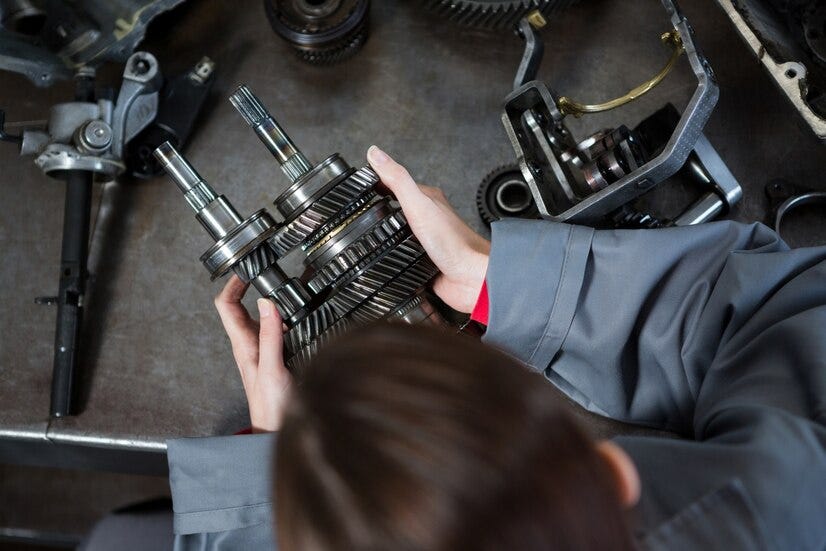
The transmission must be removed to access the clutch. Start by disconnecting any components connected to the transmission, including driveshafts, cables, and linkage. Unbolt the transmission mounts and carefully lower the transmission using a transmission jack or your jack stand. This step may require an extra set of hands due to the weight of the transmission.
5. Access the Clutch Assembly

Once the transmission is out of the way, you will see the clutch assembly mounted to the engine’s flywheel. The clutch assembly consists of a pressure plate, clutch disc, and release bearing. Begin by unbolting the pressure plate from the flywheel. Once this is done, you can remove the clutch disc and release bearing.
6. Inspect the Flywheel

The flywheel is an important part of the clutch system and should be inspected for wear and tear. Look for scoring, cracks, or heat spots. If the flywheel shows any signs of damage, it should be replaced or resurfaced before installing the new clutch.
7. Install the New Clutch

Position the new clutch disc on the flywheel, making sure that it’s aligned properly using a clutch alignment tool. Place the pressure plate over the clutch disc and bolt it onto the flywheel. Tighten the bolts gradually in a crisscross pattern to ensure even pressure. Make sure everything is aligned perfectly before moving to the next step.
8. Replace the Release Bearing

A new clutch kit should include a release bearing, which should be replaced along with the clutch disc and pressure plate. The release bearing is mounted on the transmission input shaft and works in conjunction with the clutch fork. Make sure to properly lubricate the new bearing before installing it.
9. Reinstall the Transmission

With the new clutch in place, it’s time to reinstall the transmission. Carefully lift the transmission back into position and bolt it onto the engine. Reconnect the driveshafts, cables, and linkages that you disconnected earlier. Make sure everything is tight and secure.
10. Test the New Clutch
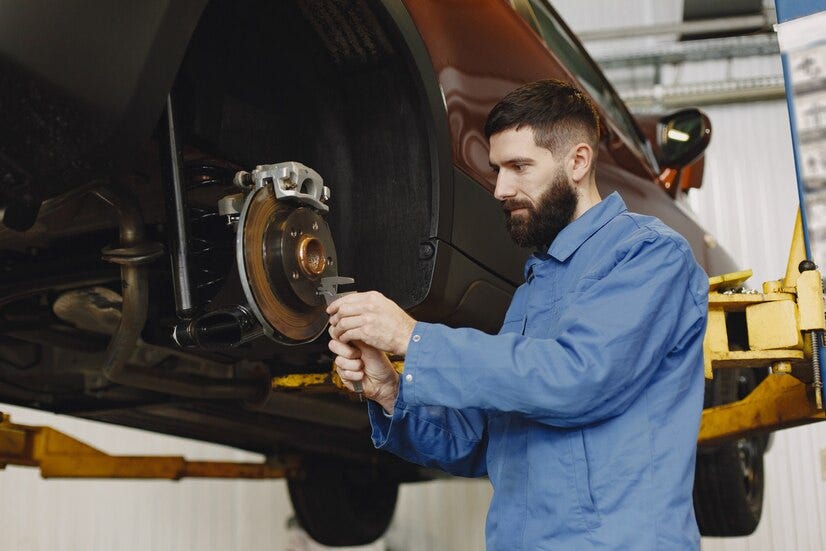
Once everything is reassembled, lower the car from the jack stands and reconnect the battery. Start the vehicle and test the clutch to ensure smooth operation. Make sure the clutch pedal feels right and that gear changes are smooth without any grinding or slippage.
How Service My Car Assist You?
Looking for reliable car battery service in Dubai? Look no further! Service My Car offers prompt and professional assistance for all your battery needs. Whether you’re stranded on the roadside or just need a quick replacement, our skilled technicians are equipped to get you back on the road in no time. With our convenient mobile service, we’ll come to you wherever you are in Dubai. Trust Service My Car for efficient and hassle-free car battery solutions.
Final Thoughts
While replacing a car clutch can seem intimidating, breaking the process down into simple steps makes it more manageable. This guide gives you a clear path to follow, but always consult your vehicle’s manual for any specific instructions related to your model. If at any point you feel unsure or overwhelmed, don’t hesitate to seek professional assistance. After all, ensuring a properly functioning clutch is essential for a safe and smooth driving experience.
-
A Complete Guide on Car Paint Repair

Your car’s paint job is one of the first things people notice. It’s not just about aesthetics; a good paint job also protects your vehicle from rust, corrosion, and damage caused by the environment. Over time, exposure to sun, road debris, and accidents can lead to scratches, chips, and dullness in the paint. Repairing or refreshing your car’s paint can make it look brand new and extend its lifespan. Here’s a comprehensive guide to car paint repair, covering everything from identifying damage to DIY and professional options.1. Understanding Different Types of Paint Damage

Before you begin any repairs, it’s crucial to identify the type of damage. Car paint damage can range from minor imperfections to serious issues that expose the car’s metal surface. The most common types include:
- Scratches: These can occur from keys, tree branches, or accidental contact with other objects. They vary in depth, with some only affecting the clear coat while others penetrate through the color and primer layers.
- Stone Chips: These are tiny chips in the paint caused by debris or gravel hitting the surface at high speeds. They often appear on the front bumper, hood, or sides of the car.
- Oxidation: Over time, exposure to UV rays can cause the paint to fade and become chalky. This is called oxidation, which primarily affects the car’s clear coat.
- Peeling: In cases where the clear coat begins to separate from the paint, you’ll notice peeling or bubbling areas. This typically happens due to improper application or prolonged exposure to harsh weather conditions.
Once you understand the type of damage, you can decide how to approach the repair.
2. DIY Car Paint Repair: When and How to Do It

For minor scratches, chips, and small areas of fading, a DIY approach can be effective and cost-efficient. Here’s a step-by-step guide to fixing common paint issues on your own:
a. Fixing Scratches
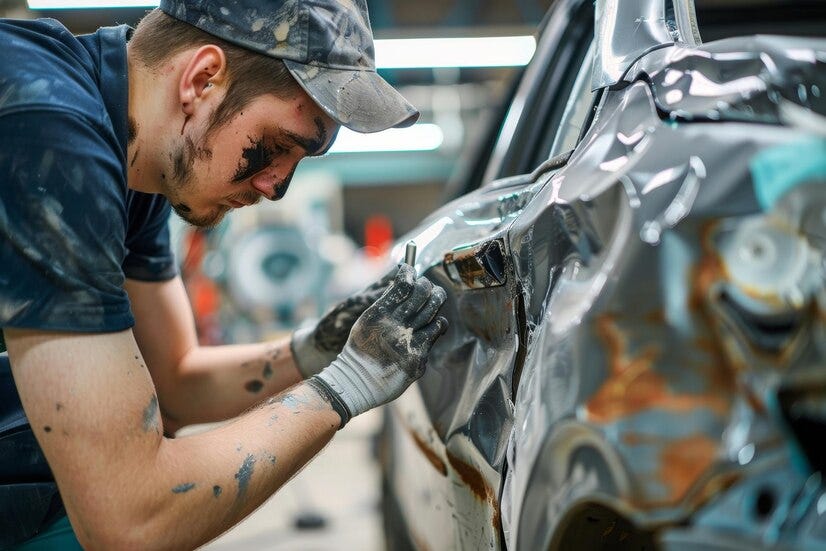
- Assess the depth: If the scratch only affects the clear coat (the top layer), it can usually be buffed out. For deeper scratches that reach the paint or primer, you’ll need touch-up paint.
- Buff out light scratches: Use a rubbing compound or scratch remover to buff out surface scratches. Apply the product using a microfiber cloth, rubbing gently in circular motions until the scratch fades.
- Touch-up deeper scratches: For deeper scratches, clean the area with soap and water, then apply touch-up paint that matches your car’s color. Most manufacturers offer small bottles or pens of matching paint.
b. Repairing Stone Chips
- Clean the area: Remove any dirt or debris from the chip. You can use rubbing alcohol to clean the surface thoroughly.
- Apply touch-up paint: Use a fine-tipped brush or paint pen to carefully apply touch-up paint. Make sure the paint is a perfect match to your car’s original color.
- Finish with clear coat: Once the paint dries, apply a thin layer of clear coat to seal the repair and restore shine.
c. Dealing with Oxidation

- Wash the car thoroughly: Use car soap and water to remove dirt and grime.
- Polish the surface: After drying the car, use a car polish to restore some shine to the oxidized areas. This process may need to be repeated several times for best results.
- Wax for protection: Finish by applying a coat of wax to protect the paint from future oxidation and UV damage.
d. Peeling Paint
For peeling paint, it’s best to visit a professional since the entire panel might need to be sanded and repainted.
3. When to Seek Professional Help

While DIY methods can work well for small issues, larger paint damage should be handled by professionals. If your car has large scratches, extensive oxidation, or peeling, a professional body shop will have the tools and expertise to restore your car’s finish.Reasons to choose professional repair:
- Color Matching: Professionals use advanced tools to ensure an exact color match with the original paint, which can be challenging for DIY repairs.
- Quality of Finish: A professional job will result in a smoother, more durable finish that lasts longer.
- Dealing with Severe Damage: If the damage has penetrated to the metal, the repair requires specialized equipment to sand, prime, and repaint the surface.
4. Prevention Tips for Maintaining Your Car’s Paint

Maintaining your car’s paint isn’t just about repairs — it’s also about prevention. Here are some tips to keep your car’s paint looking new for as long as possible:- Regular Washing: Dirt, dust, and road salt can eat away at the paint over time. Wash your car regularly to prevent buildup.
- Apply Wax: Wax adds an extra layer of protection against UV rays, moisture, and debris. Apply it every few months for best results.
- Park in Shade: Prolonged exposure to the sun’s UV rays can fade the paint. Whenever possible, park in the shade or use a car cover.
- Use Paint Protection Films: These clear films protect the paint from minor scratches, chips, and fading, especially on high-impact areas like the front bumper and hood.
How Service My Car Assist You?
Are you facing issues with your aston martin common problems? Common problems like erratic engine performance, suspension issues, or electrical faults can impact your driving experience. At Service My Car, we are experts in diagnosing and fixing these specific concerns. Our experienced technicians use advanced tools to address the unique challenges of Aston Martin vehicles efficiently. Don’t let these common problems affect your ride—rely on Service My Car for thorough and professional repairs, and get back to enjoying your luxury vehicle with confidence.
Conclusion
Car paint repair doesn’t have to be intimidating. Whether you’re tackling minor chips or dealing with more serious damage, understanding the process can save you time, money, and frustration. For minor repairs, DIY methods can be effective, but for larger damage, seeking professional help ensures a high-quality finish. By keeping up with regular maintenance and taking preventative measures, you can keep your car looking fresh and vibrant for years to come.
-
7 Common Causes of Flat Tires and How to Prevent Them

Flat tires are an inconvenience that most drivers will face at some point. Whether it’s during a quick commute or a long road trip, a flat tire can derail your plans and create frustration. However, understanding the common causes of flat tires can help you take preventative measures to avoid them. In this article, we will explore seven frequent reasons for flat tires and what you can do to keep your tires in optimal condition.1. Punctures by Sharp Objects

One of the most common causes of a flat tire is a puncture by sharp objects, such as nails, screws, or glass. These hazards can easily pierce through your tire’s rubber, leading to a slow leak or immediate deflation.Prevention: Regularly inspect your tires for embedded objects and be mindful of where you drive, especially through construction sites or debris-strewn roads. If you spot a nail or similar object lodged in the tire, don’t pull it out immediately; this could worsen the leak. Instead, get the tire checked by a professional.
2. Underinflation

Driving with underinflated tires can lead to uneven wear, which weakens the tire’s structure and increases the risk of a blowout. Tires with low air pressure generate excessive heat, particularly during long drives, which can damage the sidewalls and cause a rupture.Prevention: Use a tire pressure gauge to check the pressure at least once a month or before long trips. Follow your vehicle manufacturer’s recommendations for optimal tire pressure, which can usually be found on a sticker in the driver’s side door frame or in the owner’s manual.
3. Overloading the Vehicle

Carrying more weight than your vehicle’s recommended load capacity can put undue stress on your tires. Overloaded tires are more susceptible to blowouts and excessive wear, as they carry the extra load unevenly.Prevention: Make sure your vehicle’s load capacity, which is typically listed on the same label as tire pressure recommendations, is not exceeded. When moving heavy items, distribute the weight evenly to reduce strain on individual tires.
4. Hitting Potholes or Curbs
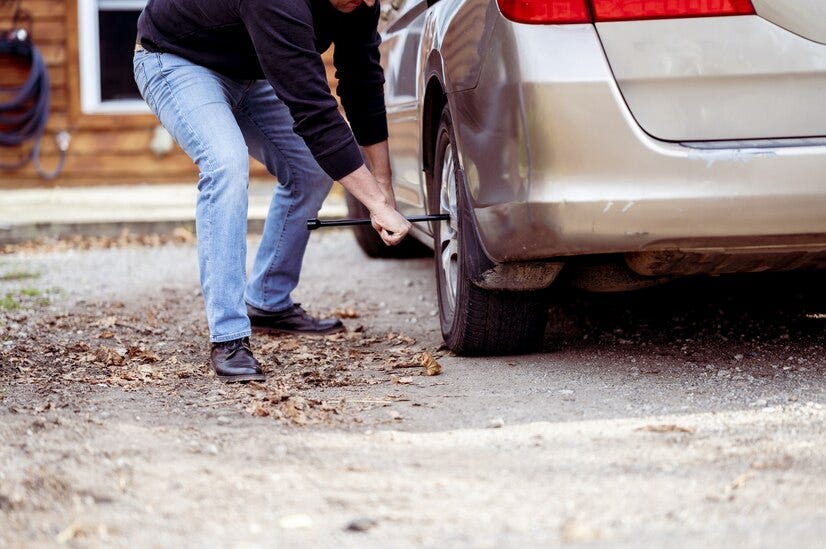
Potholes, curbs, and other road hazards can cause immediate tire damage, especially if hit at high speeds. The impact can lead to a pinch flat, where the tire is compressed between the object and the wheel rim, causing a tear or puncture.Prevention: Be cautious of road conditions and avoid potholes and curbs whenever possible. If you can’t avoid them, try to slow down to minimize the impact. Regularly inspect your tires and rims for any visible damage after hitting an obstacle.
5. Worn Tire Tread

As tires wear down, they become more susceptible to punctures and flats. Bald tires lack sufficient tread to grip the road properly and are more prone to blowouts due to their weakened structure. In wet conditions, they are also more likely to cause hydroplaning.Prevention: Check the tread depth of your tires using the penny test: insert a penny into the tire’s tread with Lincoln’s head facing downward. If you can see the top of Lincoln’s head, it’s time to replace your tires. Rotating your tires regularly can also help ensure even wear, extending their lifespan.
6. Valve Stem Leaks
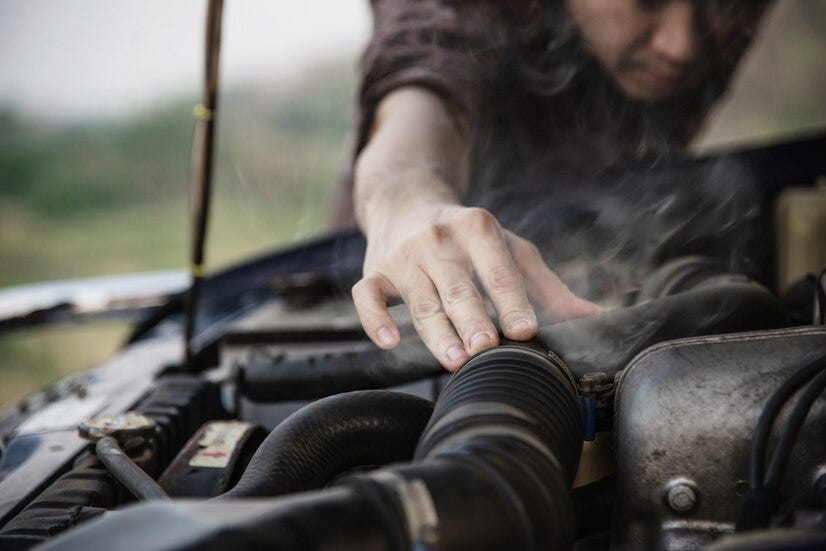
The valve stem, which allows you to inflate the tire, can develop leaks over time due to damage or wear. A faulty valve stem can cause a slow loss of air, leading to a flat tire if not addressed. Dirt, debris, and exposure to the elements can also contribute to valve stem deterioration.Prevention: During regular tire maintenance, ask your mechanic to inspect the valve stems for wear or damage. If you notice air leaking around the valve, have it replaced as soon as possible. A quick visual inspection when inflating your tires can also help detect early signs of leaks.
7. Extreme Temperatures

Fluctuating temperatures can cause your tire pressure to increase or decrease rapidly. In hot weather, the air inside the tire expands, potentially leading to overinflation and a blowout. Conversely, cold weather can cause underinflation, which increases the risk of a flat tire.Prevention: Check your tire pressure more frequently during temperature extremes, especially in the summer and winter months. Tire pressure tends to drop about 1–2 PSI for every 10°F decrease in temperature, so it’s essential to adjust accordingly.
How Service My Car Assist You?
Looking for top-notch nissan armada service? At Service My Car, we specialize in providing comprehensive maintenance and repair services for your Nissan Armada. From routine oil changes to more extensive repairs, our expert technicians ensure your vehicle is in peak condition. With easy online booking, swift service, and competitive prices, we make maintaining your Armada hassle-free. Trust Service My Car for exceptional care and keep your Nissan Armada running smoothly on every drive. Book your service today!
Conclusion
Flat tires are an unfortunate but inevitable part of driving. However, by understanding the common causes of flat tires, you can take steps to reduce your risk. Regular tire maintenance, proper inflation, and cautious driving are crucial to extending the life of your tires and avoiding the hassle of a flat. Remember, prevention is key — don’t wait until you’re stranded on the side of the road to think about tire care!
-
Essential Roadside Assistance: Your Ultimate Guide to Staying Safe on the Road

Whether you’re a seasoned driver or someone new to the road, the unexpected can happen at any time. A flat tire, dead battery, or engine trouble can quickly turn a pleasant drive into a stressful situation. This is where roadside assistance comes in — a safety net that every driver should consider essential. In this guide, we’ll explore the importance of roadside assistance, what it typically covers, and how you can stay safe when you’re stranded on the road.
Why Roadside Assistance is Essential

Roadside assistance provides peace of mind when you’re on the road. It’s not just about getting help when you need it — it’s about knowing that help is available 24/7, no matter where you are. Whether you’re on a long road trip or just commuting to work, roadside assistance ensures that you’re never truly alone.
Imagine you’re driving through a remote area, far from the nearest town, and suddenly your car breaks down. Without roadside assistance, you might be left to figure out how to tow your car or find the nearest mechanic. But with a roadside assistance plan, one call can connect you to a professional who will come to your aid, whether you need a tow, fuel delivery, or even a locksmith.
What Does Roadside Assistance Typically Cover?

While the specifics can vary depending on your provider and plan, most roadside assistance packages cover a range of common emergencies:
1. Towing Services: If your car breaks down and can’t be fixed on the spot, a tow truck will be dispatched to take your vehicle to the nearest repair shop. This can save you from the hefty fees that towing companies often charge, especially if you’re far from a populated area.
2. Battery Jump-Starts: A dead battery is one of the most common reasons for roadside assistance calls. Whether it’s due to cold weather, leaving your lights on, or just an old battery, a quick jump-start can get you back on the road.
3. Flat Tire Changes: Not everyone knows how to change a tire, and even if you do, it can be dangerous on a busy highway. Roadside assistance will send someone to safely change your tire for you.
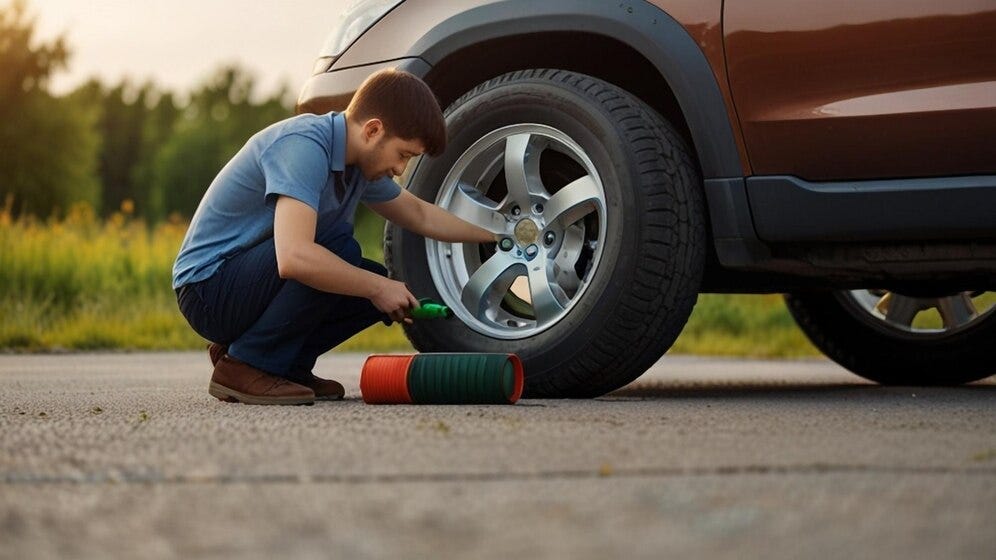
4. Lockout Services: It’s easy to accidentally lock your keys in your car. Roadside assistance can help you regain access without damaging your vehicle.
5. Fuel Delivery: Running out of gas happens to the best of us. If you find yourself stranded with an empty tank, roadside assistance will deliver enough fuel to get you to the nearest gas station.
6. Minor Mechanical Repairs: In some cases, a technician might be able to perform a quick fix on-site, saving you the time and hassle of towing your car to a repair shop.
Staying Safe While Waiting for Assistance
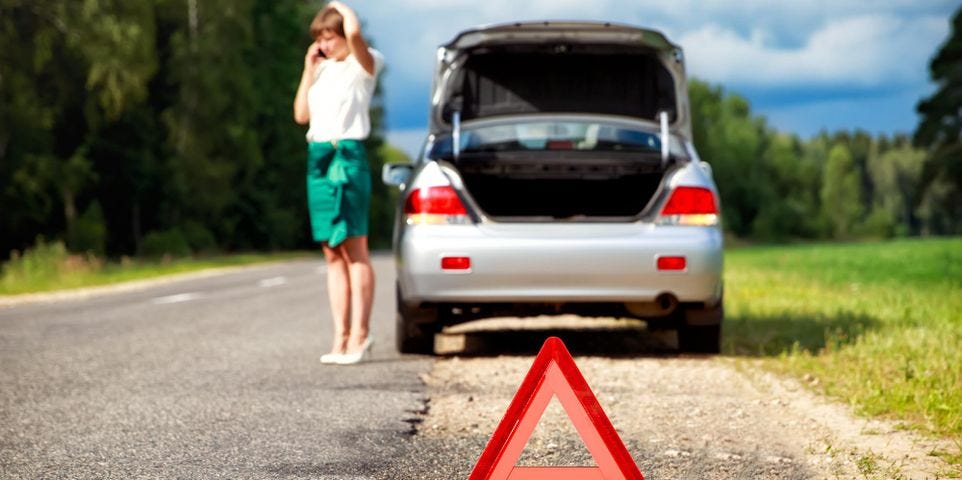
Even with the security of roadside assistance, it’s important to prioritize your safety while waiting for help to arrive. Here are some tips to keep in mind:
1. Pull Over Safely: If your car is still operable, try to pull over to a safe location, such as a rest area or the shoulder of the road. Make sure your vehicle is as far off the road as possible to avoid being hit by passing traffic.
2. Turn on Your Hazard Lights: This alerts other drivers to your presence and helps ensure that you and your vehicle are visible, especially in low-light conditions.

3. Stay Inside Your Vehicle: Unless it’s safer to be outside (e.g., your car is smoking or there’s a risk of fire), it’s usually best to stay inside your vehicle with your seatbelt on. If you need to exit, do so from the passenger side, away from traffic.
4. Use Reflective Markers: If you have them, set out reflective triangles or flares behind your vehicle to further increase your visibility to other drivers.
5. Keep Your Phone Charged: A fully charged phone is your lifeline in an emergency. Keep a car charger handy, and consider carrying a portable power bank as a backup.
Choosing the Right Roadside Assistance Plan

When selecting a roadside assistance plan, consider your driving habits, the age of your vehicle, and how much you travel. Some plans are bundled with auto insurance policies, while others are offered by car manufacturers, credit card companies, or third-party providers.
Look for a plan that offers nationwide coverage, 24/7 service, and a good reputation for quick response times. It’s also wise to compare what different plans cover and any limitations they might have, such as the number of service calls allowed per year or the maximum towing distance.
How Service My Car Assist You?
Looking for reliable service for your mercedes-benz 300 service? Service My Car offers expert maintenance and repair solutions designed to keep your luxury vehicle in prime condition. Our experienced technicians provide comprehensive care tailored to your Mercedes-Benz 300’s specific needs, ensuring smooth and efficient performance. With Service My Car, you can trust that your vehicle is in capable hands. Schedule your appointment today and experience exceptional service that keeps your Mercedes-Benz 300 running at its best!
Conclusion
Roadside assistance is more than just an add-on to your insurance policy — it’s a crucial part of staying safe on the road. By understanding what your roadside assistance plan covers and how to stay safe while waiting for help, you can drive with confidence, knowing that you’re prepared for whatever the road throws your way.

You’re offline. This is a read only version of the page.

